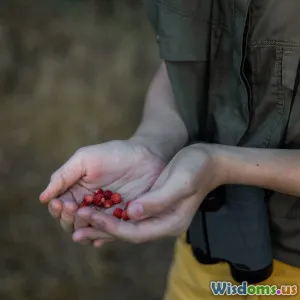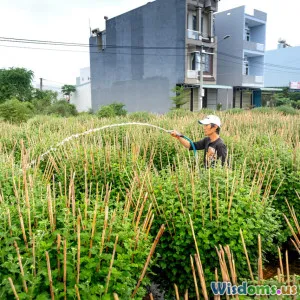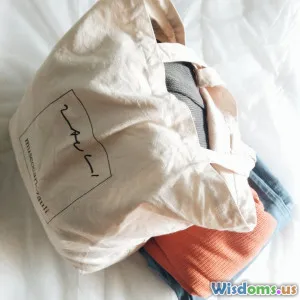
Sustainable Living Through Foraging
6 min read Discover the art of foraging for sustainable living, exploring nature's bounty while promoting environmental awareness. (0 Reviews)
Sustainable Living Through Foraging
Foraging, the practice of gathering wild food resources, is an age-old skill that has resurfaced in recent years as a sustainable living choice. The modern world is realizing the importance of stepping back from consumerism and reconnecting with nature. Foraging not only provides fresh, organic food but also promotes environmental stewardship, biodiversity, and a sense of adventure. This article dives into the principles of foraging, its benefits, and practical steps to incorporate this practice into your sustainable living journey.
Understanding Foraging
Foraging encompasses gathering wild foods from forests, fields, and even urban settings. It includes collecting fruits, nuts, seeds, mushrooms, and edible plants. The practice is rooted in ancient traditions, where our ancestors relied on foraged foods for survival. Today, foraging has evolved into an enjoyable outdoor activity that encourages individuals to engage with nature and learn about local ecosystems.
The Benefits of Foraging
Foraging offers numerous benefits:
- Healthier Eating: Wild foods are often more nutrient-dense than their store-bought counterparts. Foraged foods are free from pesticides and fertilizers, providing a cleaner, organic option.
- Environmental Impact: Foraging minimizes the carbon footprint associated with commercial farming and food transportation. It encourages the protection of habitats and biodiversity since foragers often develop a deeper appreciation for their local ecosystems.
- Cost-Effective: Gathering your own food can significantly reduce grocery bills. It’s a way to enjoy fresh produce without the expense of buying from the market.
- Connection to Nature: Foraging fosters a profound relationship with the environment. It encourages mindfulness and an understanding of seasonal cycles, promoting ecological awareness.
How to Start Foraging
1. Research Local Edibles
Before embarking on your foraging adventure, familiarize yourself with the edible plants native to your area. Many resources, including field guides, apps, and local workshops, can help you identify safe foraging options.
2. Join a Foraging Group
Consider joining a local foraging group or nature club. Experienced foragers can provide guidance, share their knowledge, and help you avoid common mistakes, such as misidentifying toxic plants.
3. Go for a Walk
Start by exploring your local parks, forests, and green spaces. Look for common foraging targets like dandelions, nettles, and wild berries. Remember to collect only what you can consume, leaving plenty behind for wildlife and future growth.
4. Practice Responsible Foraging
Always follow the ethical guidelines of foraging. This includes:
- Leave No Trace: Take only what you need and avoid damaging plants or ecosystems.
- Know the Law: Be aware of local regulations regarding foraging in parks and protected areas.
- Educate Yourself: Ensure you can accurately identify edible plants to avoid potential poisoning from look-alikes.
5. Preserve Your Harvest
Once you’ve foraged your wild edibles, consider ways to preserve them for later use. Techniques such as drying, freezing, or making jams and jellies can enhance your sustainable living practices.
Culinary Uses of Foraged Foods
Foraged foods can be incorporated into your diet in many creative ways. Here are just a few ideas:
- Salads: Incorporate wild greens like lamb’s quarters or chickweed into salads for a fresh twist.
- Pesto: Use foraged herbs and greens to make a unique pesto.
- Tea: Brew wild herbal teas from plants like mint or elderflower.
- Baking: Add berries or nuts to baked goods for a natural sweetness and nutrition boost.
Conclusion
Sustainable living through foraging is not merely a trend; it’s a return to our roots, a way to nourish ourselves while honoring the planet. By understanding the principles of foraging and embracing this practice, we can cultivate a deeper connection to nature, reduce our ecological footprint, and enjoy the rich flavors of the wild. So grab your basket, hit the trails, and discover the delicious bounty that awaits you in the great outdoors!
Rate the Post
User Reviews
Popular Posts





















